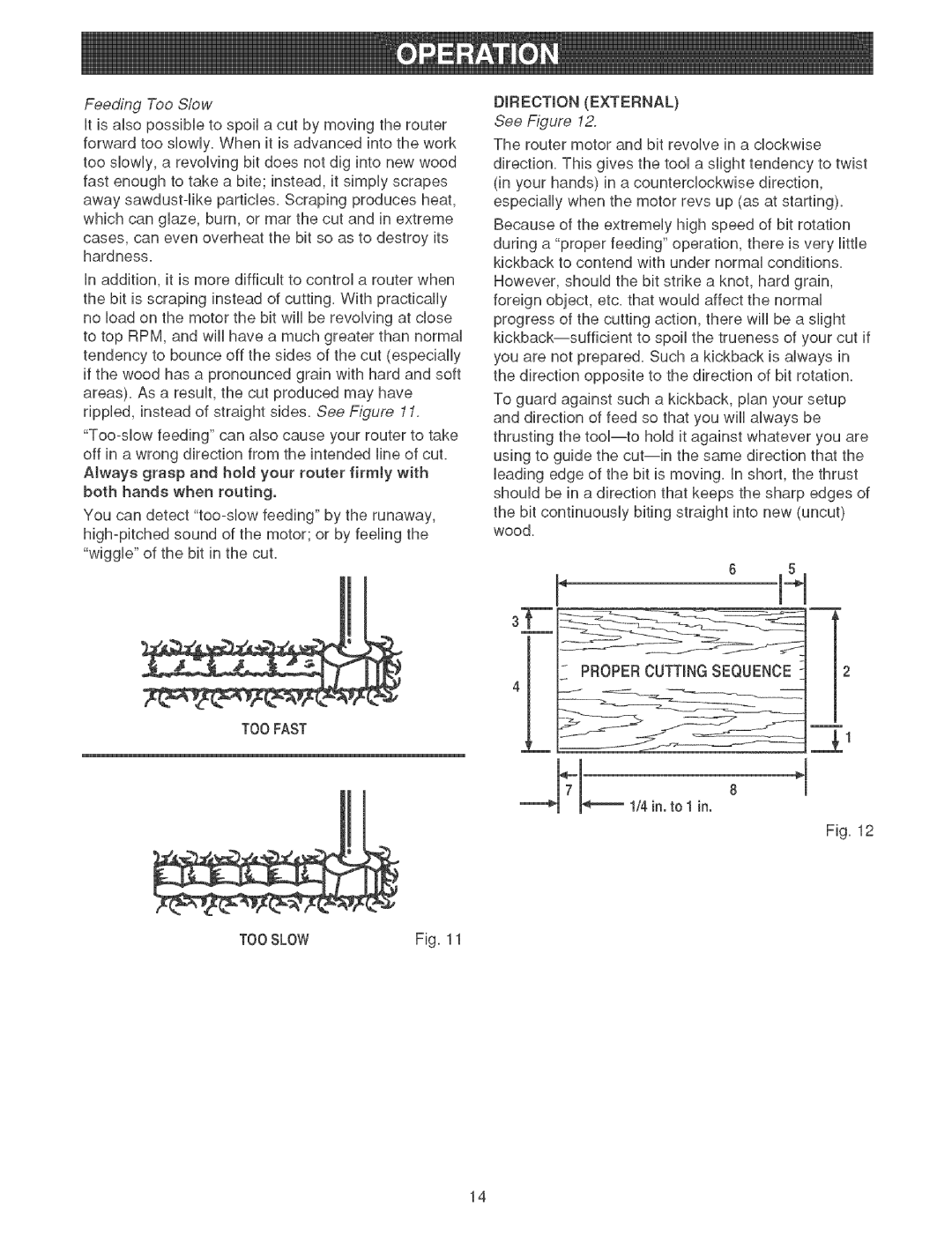
Feeding Too Slow
Utis aBo possiMe to spoil a cut by moving the router forward too sbwUy. When it is advanced into the work too sbwUy, a revoMng bit does not dig into new wood fast enough to take a bite; instead, it simpUy scrapes away
cases, can even overheat the bit so as to destroy its hardness.
Unaddition, it is more difficuUt to controU a router when the bit is scraping instead of cutting. With practically no bad on the motor the bit wHUbe revoMng at dose to top RPM, and wHUhave a much greater than normaU tendency to bounce off the sides of the cut (especially if the wood has a pronounced grain with hard and soft areas). As a result, the cut produced may have rippled, instead of straight sides. See Figure 11.
You can detect
DIRECTION (EXTERNAL)
See Figure 12.
The router motor and bit revolve in a clockwise direction. This gives the tool a slight tendency to twist (in your hands) in a counterclockwise direction, especially when the motor revs up (as at starting). Because of the extremely high speed of bit rotation
during a "proper feeding" operation, there is very little kickback to contend with under normal conditions.
However, should the bit strike a knot, hard grain, foreign object, etc. that would affect the normal progress of the cutting action, there will be a slight
To guard against such a kickback, plan your setup and direction of feed so that you will always be thrusting the
the bit continuously biting straight into new (uncut) wood.
sT
PROPER CUTTING SEQUENCE
4
TOOFAST
Fig. 12
TOOSLOW | Fig. 11 |
14
